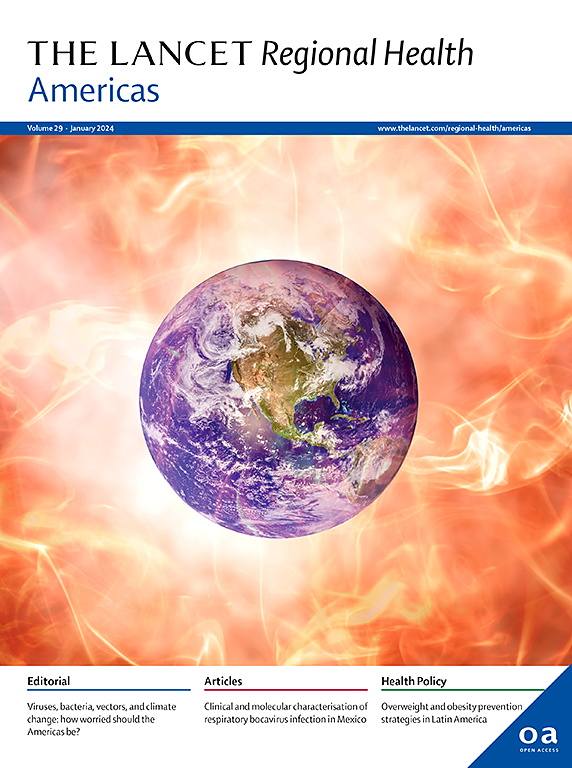Healthcare responding to violence and abuse in Brazil: a quasi-experimental difference-in-differences analysis
IF 7
Q1 HEALTH CARE SCIENCES & SERVICES
引用次数: 0
Abstract
Background
Domestic violence against women (DVAW) is a public health issue and a breach of human rights, yet evidence on effective interventions remains limited, particularly in low-income and middle-income countries. This study aimed to evaluate changes in identification and referral to specialist support associated with system-level strategies implemented within Brazilian primary healthcare (PHC) to strengthen the response to DVAW. The strategies comprised an intervention called Healthcare Responding to Violence and Abuse (HERA).
Methods
Using a quasi-experimental design, HERA was implemented in eight PHC clinics, while 33 served as controls. Data on DVAW identification and referral were obtained from the national Epidemiological Surveillance System. Difference-in-differences analysis, using negative binomial regression, assessed HERA's impact, controlling for patient inflow, clinical supervision, COVID-19 lockdown, region, and clinic. Results are reported as marginal effects with 95% confidence intervals (CI).
Findings
There was an increase in the probability of DVAW identification (0.47; 95% CI 0.18–0.77) and referral to support services (0.38; 95% CI 0.03–0.73), when adjusting for panel effects and time. The results were even larger when further controlling for additional variables (0.82 for identification [95% CI 0.44–1.21] and 0.87 for referrals [95% CI 0.47–1.29]).
Interpretation
HERA strategies increased DVAW identification and referral in PHC settings. Clinics implementing HERA were already more likely to identify and refer cases before the implementation, suggesting that HERA's strategies may be more effective in clinics that find DVAW interventions more acceptable, at least in Brazil.
Funding
NIHR Global Health Research Group Award.
巴西应对暴力和虐待的医疗保健:一项准实验性差异中差异分析
背景:对妇女的家庭暴力是一个公共卫生问题,也是侵犯人权的行为,但有关有效干预措施的证据仍然有限,特别是在低收入和中等收入国家。本研究旨在评估巴西初级卫生保健(PHC)实施的系统级战略在识别和转诊专家支持方面的变化,以加强对DVAW的应对。这些战略包括一项名为“应对暴力和虐待的医疗保健”的干预措施。方法采用准实验设计,在8家初级保健诊所实施HERA, 33家作为对照。DVAW鉴定和转诊数据来自国家流行病学监测系统。采用负二项回归分析,评估了HERA的影响,控制了患者流入、临床监督、COVID-19封锁、地区和诊所。结果以95%置信区间(CI)的边际效应报告。结果:DVAW鉴别的概率增加(0.47;95% CI 0.18-0.77)和转介到支持服务(0.38;95% CI 0.03-0.73),当调整面板效应和时间时。当进一步控制其他变量时,结果甚至更大(鉴定0.82 [95% CI 0.44-1.21]和转诊0.87 [95% CI 0.47-1.29])。hera策略增加了PHC环境中DVAW的识别和转诊。实施HERA的诊所在实施之前已经更有可能识别和转诊病例,这表明HERA的策略在那些认为DVAW干预措施更容易被接受的诊所可能更有效,至少在巴西是这样。资助国家卫生研究院全球卫生研究小组奖。
本文章由计算机程序翻译,如有差异,请以英文原文为准。
求助全文
约1分钟内获得全文
求助全文
来源期刊

Lancet Regional Health-Americas
Multiple-
CiteScore
8.00
自引率
0.00%
发文量
0
期刊介绍:
The Lancet Regional Health – Americas, an open-access journal, contributes to The Lancet's global initiative by focusing on health-care quality and access in the Americas. It aims to advance clinical practice and health policy in the region, promoting better health outcomes. The journal publishes high-quality original research advocating change or shedding light on clinical practice and health policy. It welcomes submissions on various regional health topics, including infectious diseases, non-communicable diseases, child and adolescent health, maternal and reproductive health, emergency care, health policy, and health equity.
 求助内容:
求助内容: 应助结果提醒方式:
应助结果提醒方式:


